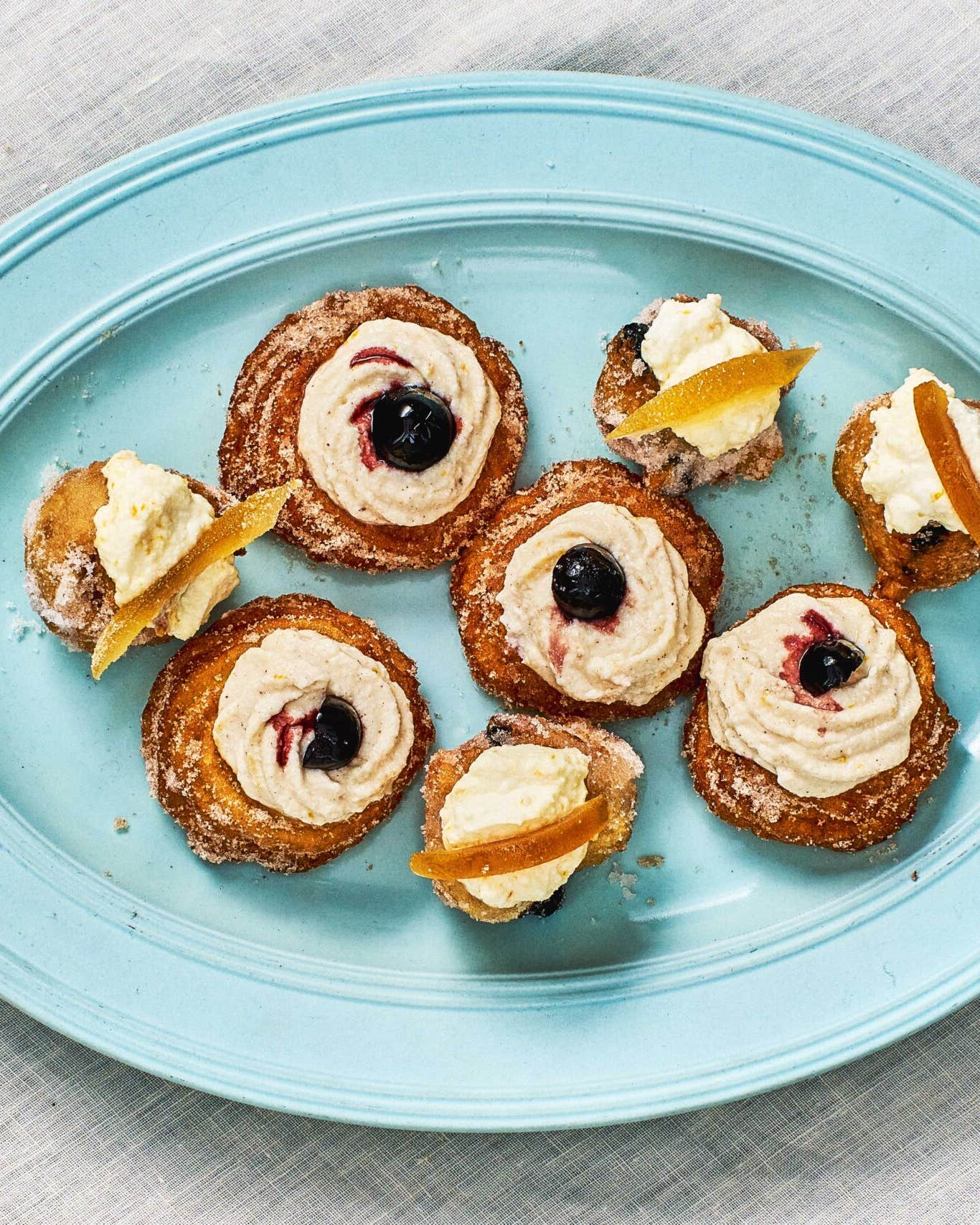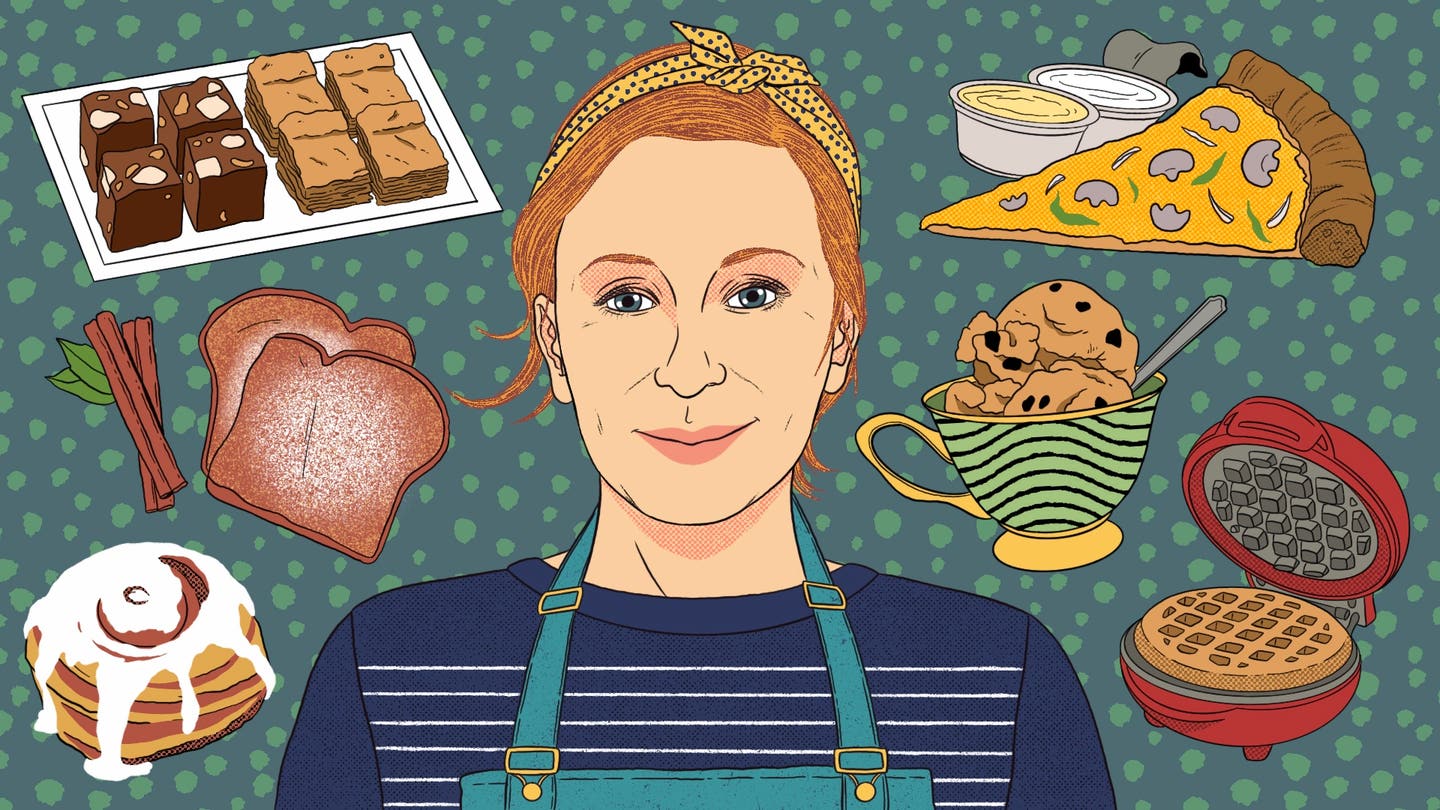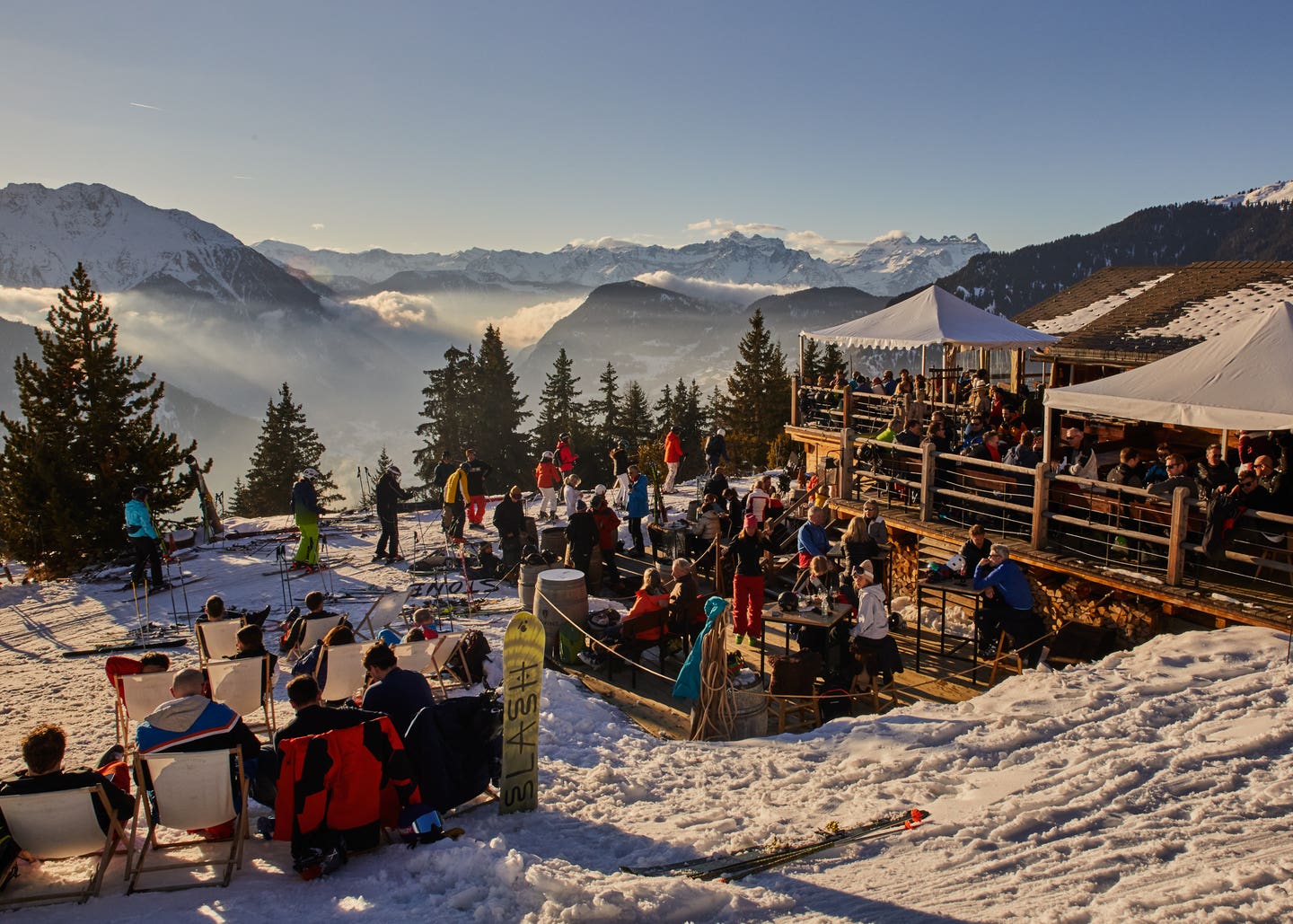
In Switzerland’s Valais Region, Restaurants Serve the Apex of Cheesy Goodness
And it’s not fondue.
Chef Jean Lou Margelisch doesn’t know the journalist visiting his restaurant Le Namasté at Savoleyres in Switzerland’s Valais region was once a 23-year-old ski bum (saisonaire) who cooked fondue in his kitchen for a season.
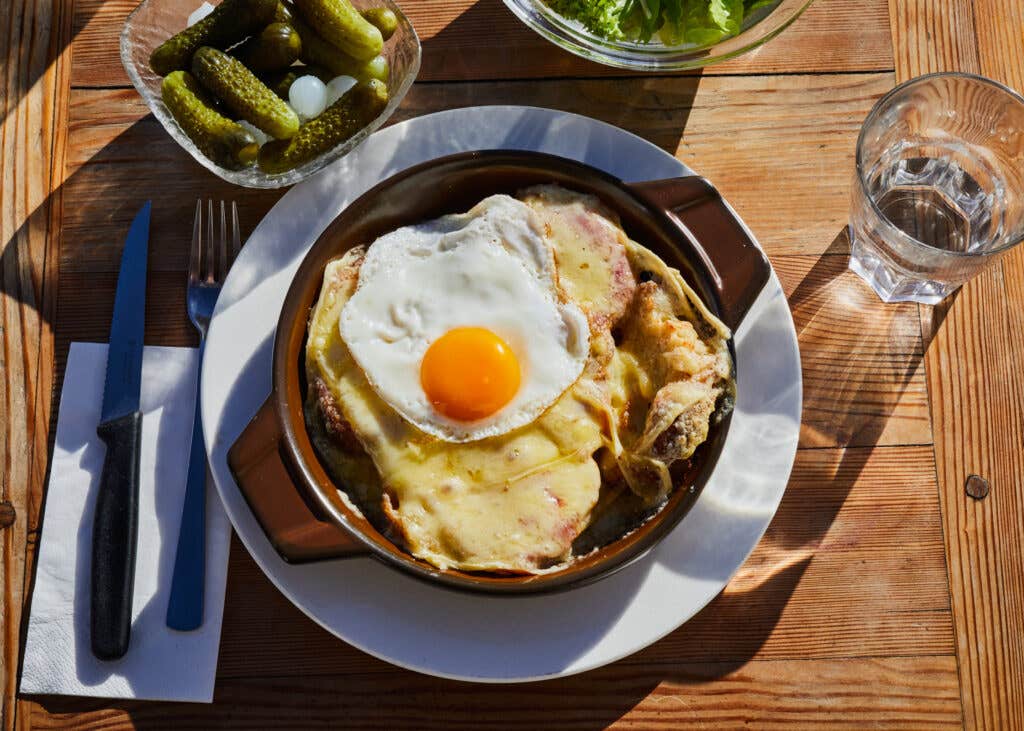
When I ski in, the chef is soaking up the sun on the terrace overlooking the internationally renowned Verbier. It’s been 20 years since I last saw him, but he’s just as I remember, content and young-looking for his age. Perhaps it's the bad French with an Australian accent, but he does a double take and recognizes me. “I’m here to talk croûte,” I say. Bemused, he responds, “What do you need to know?” I’ve been returning to the area almost annually, but the dish has not undergone any trendy twists on tradition. For the people of this region, croûte au fromage is as everyday as a cup of joe.
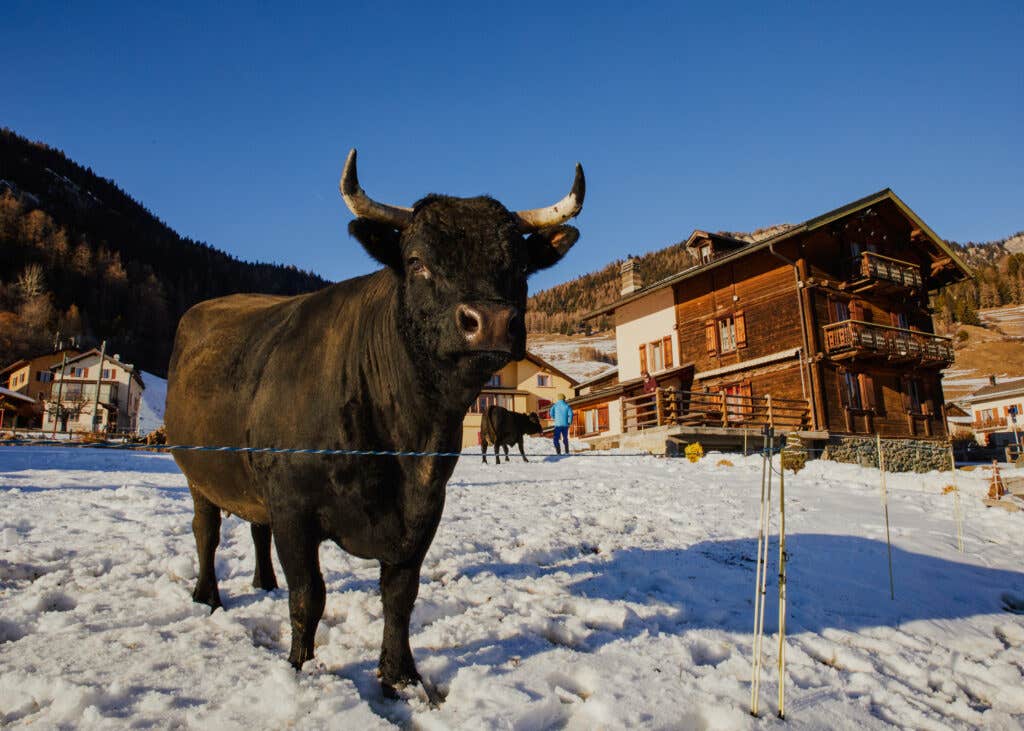
In essence, the local classic consists of slices of bread arranged in a ceramic dish, topped with cheese and heated in a hot oven. Simple, right? But before you whip one up, ask yourself: Is the bread sourdough or plain, toasted or not? Is it splashed with wine or soaked in milk, or none at all? Is it just one cheese or a blend? Goat milk or cow? In a country where the cuisine is built upon dairy, your location in Switzerland inevitably dictates what kind of cheese sits atop your croûte. Here in Valais, a canton nestled near the Swiss border with Italy and France, that means 100 percent raclette, the product of raw milk, calf rennet, and salt, lightly aged for 3 months—which, in my opinion, makes for the very best croûte.
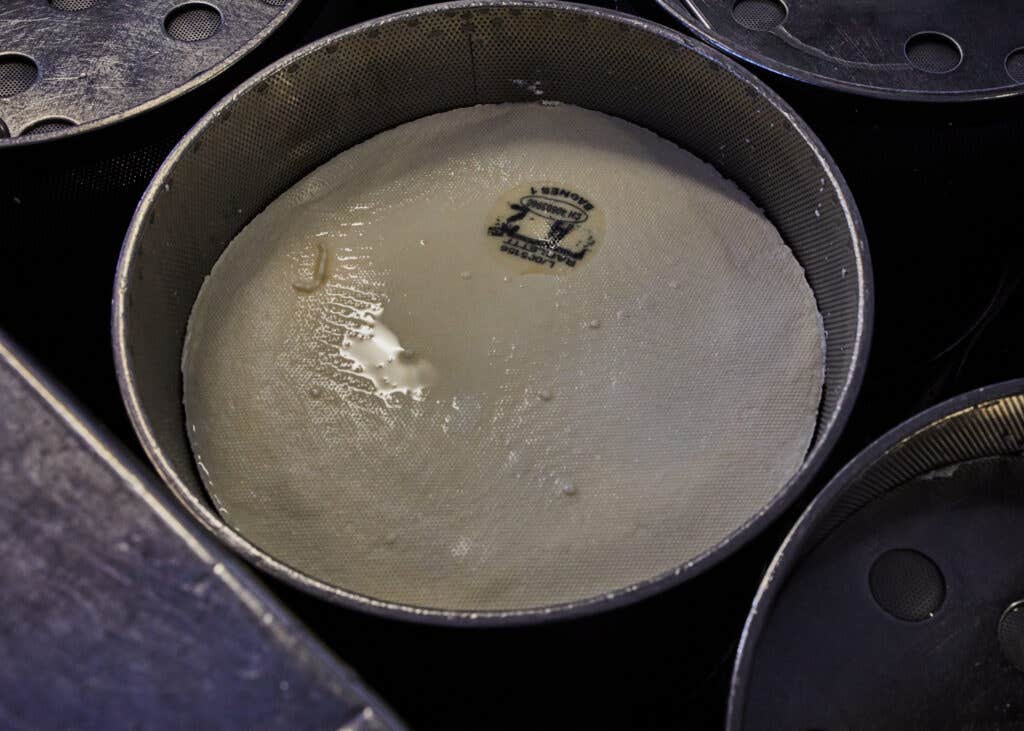
You would think a dish like this could be leveraged to no end, but the local restaurants are of one mind: don’t mess with greatness. All the Valaisanne menus read the same: It’s served au nature (cheese and bread) or with the addition of egg, ham, or egg and ham. The most ambitious riffs might include lardons, mushrooms, and/or tomatoes. Even with that tried and true reputation, though, croûte is still Switzerland’s lesser-known cheese dish. It’s humble and less geared for social gatherings than, say, the theatrics of scraping a raclette fireside. As Margelisch tells me, “If a table can’t all agree on sharing a fondue, someone will often order a croûte.”
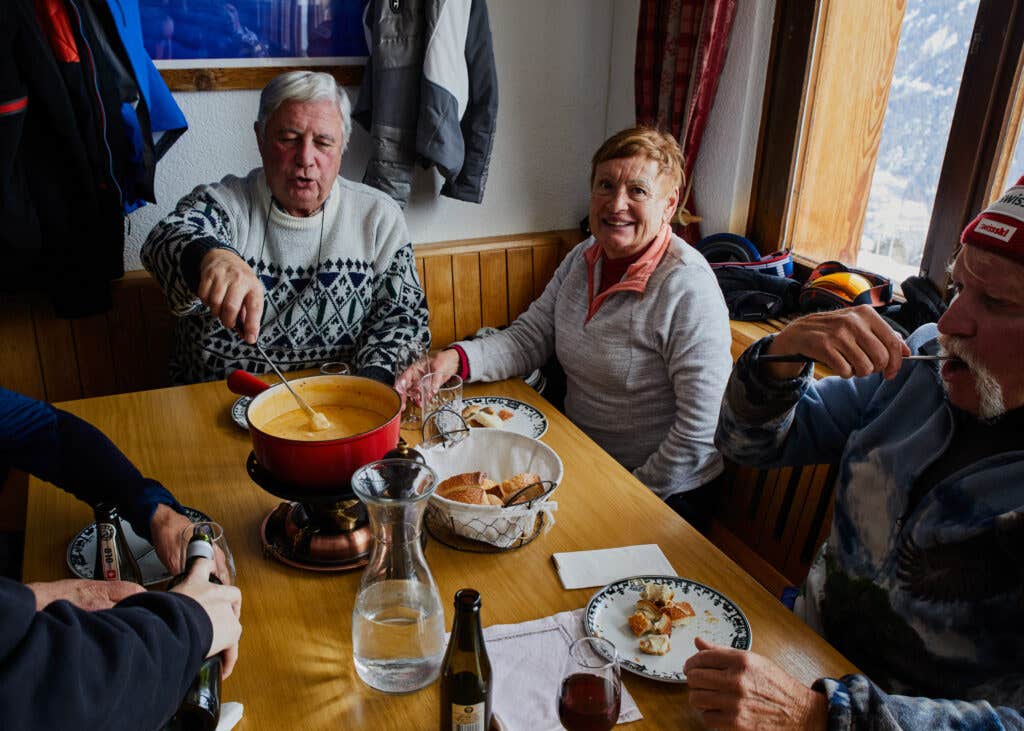
Perched at an altitude of just over 5,500 feet on Bruson, a mountain face across the valley from Verbier, Eddy and Marie Paul Murisier run the popular Restaurant de Moay. Eddy sheds some light on the croûte’s humble beginnings: “It's a peasant dish, a way to use up old bread. If stale, one could soak it in milk or splash it with wine to soften it.” The croûte has also become a mainstay because of the climate, he tells me. “In the old days in the middle of winter, maintaining heat while scraping raclette or melting fondue was difficult. These clay dishes can stay warm for a long time, so they replaced raclette and fondue on colder days.”
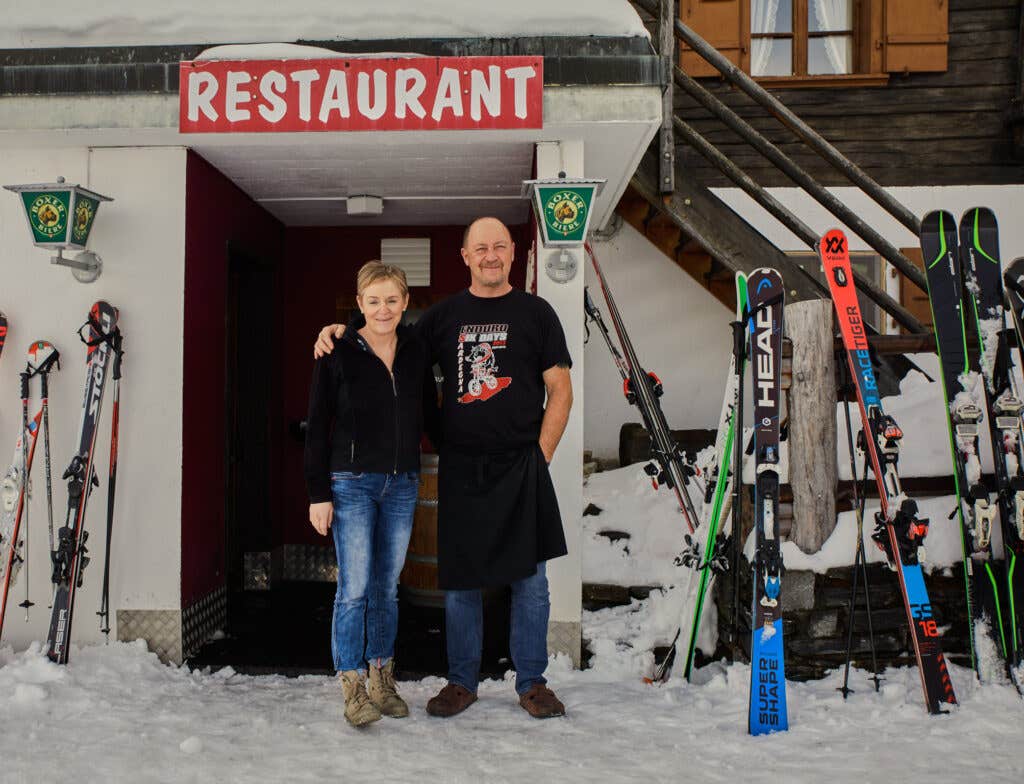
On the afternoon I visit, the sky is bluebird-hued just after a snowfall, and condensation accumulates on the windows from the heat of all the patrons packing in for lunch. Everyone is abuzz about Eddy and Marie’s son, Justin Murisier, a professional slalom skier and local hero who’s chasing gold at the Winter Olympics in Beijing. He’s on the wall, in conversation, and even on my sugar sachet. The Murisiers’ story in creating De Moay with a strong sense of community is testament to the enduring simplicity of Swiss terroir-based cuisine; the couple inherited the restaurant from family—and Eddy, with no formal training, has gone on to cook the Valaisanne menu to great success.
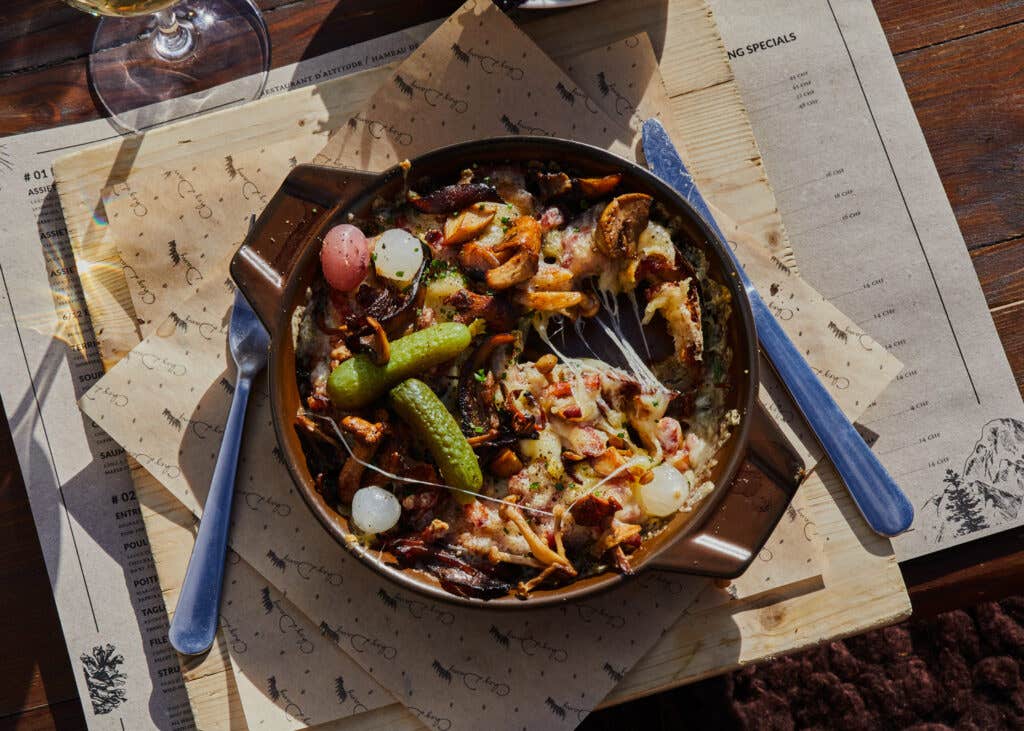
Take a left turn off Verbier’s ski home run and you will find Hameau Chez Dany, a restaurant in the woods where guests are shuttled up on snowmobiles in the dark for dinner. I’m here on the earlier side, when an after-ski crowd laps up the sun before it dips over the mountain ridge on the horizon. The menu is diverse—the region’s classics with elegant flourishes are there, but also dishes like a superfood salad to accommodate the international clientele. French-Finnish restaurateur Laurent Royer tells me that they’ve experimented with some things, such as swapping kirsch for whisky, but he concluded, “when the [dairy] products are so good, they don’t need anything.” It’s here that I try the most audacious croûte of my visit, which also happens to be one of the most satisfying. The day’s special comes laden with cheese and topped with pan-fried mushrooms, lardons, and a good amount of pickle (essential to aid digestion).
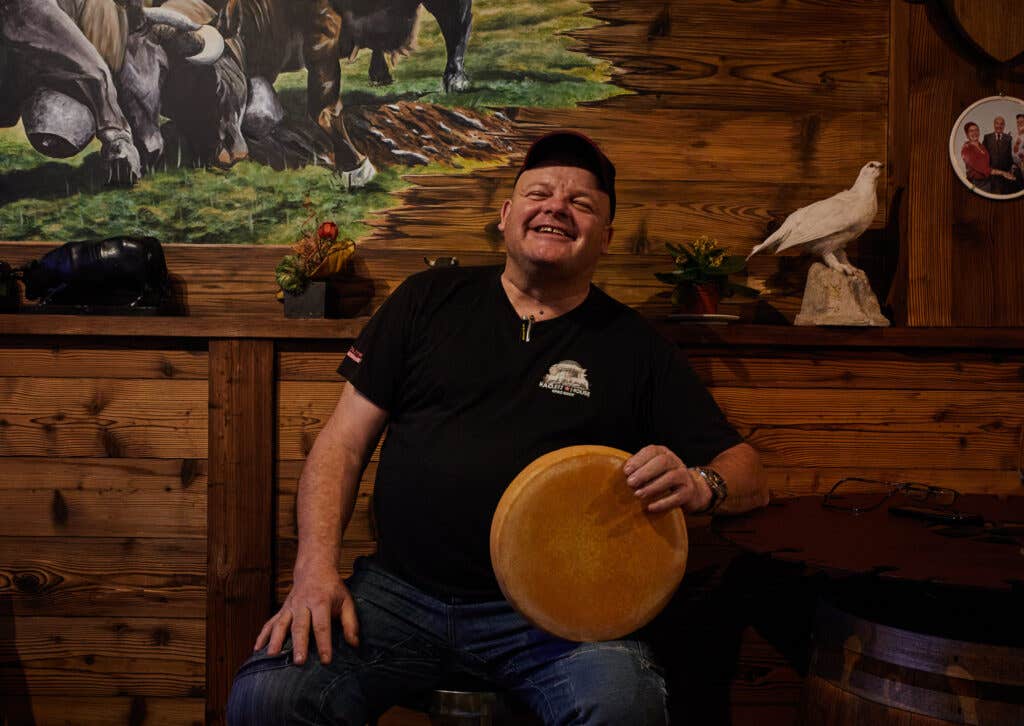
In the valley below Verbier is raclette’s mission control, Raclett’House (aka Chez Eddy), owned and run by Eddy Baillifard. Growing up as a herder, Baillifard spent almost a year in the hospital following a bad motorbike accident, changing his destiny from making cheese to serving it. Now, he travels the world acting as an ambassador for raclette (and is the culinary consultant behind the roboclette).
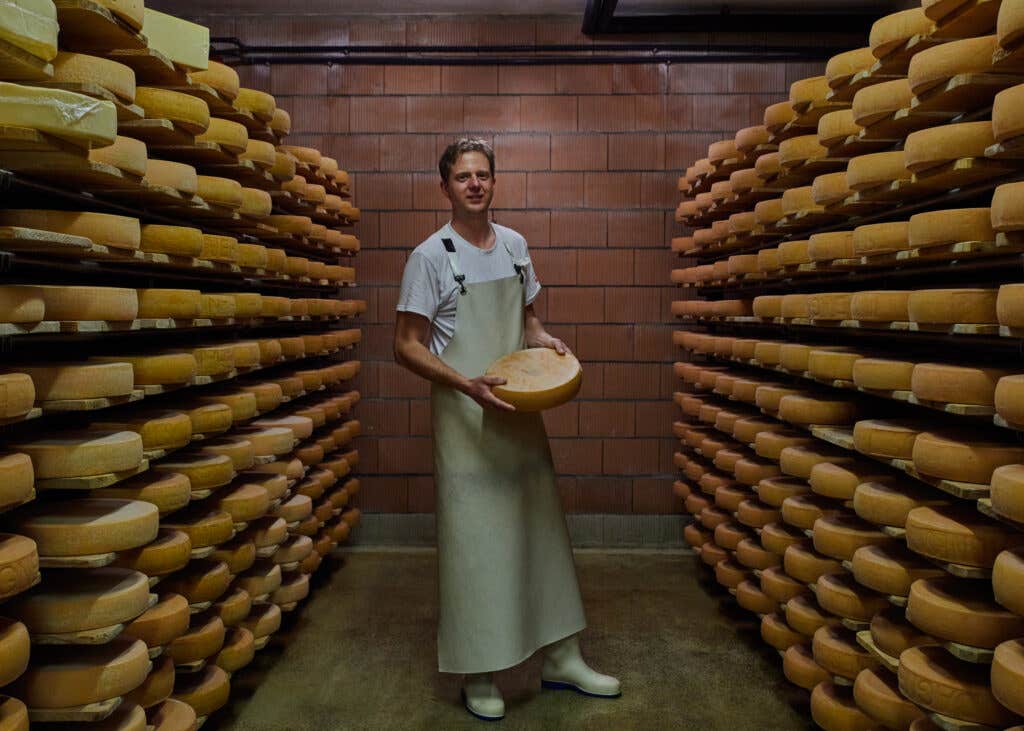
When Baillifard enters the room, wheel of cheese tucked under his arm, his presence can be felt immediately. Sitting down, he shares a bit more with me on the croûte’s history as “a way to use up the washed rind of raclette wheels; it can be grated and melted.” He’s excited at the prospect of Justin Murisier competing in Beijing (Baillifard served raclette and croûte through the night at his place on Justin’s race days), but when I mention that Eddy up the hill uses 170g of cheese on his croûte, Baillifard scoffs at the amount—“a minimum of 200g!” We touch on more sensitive subjects—how American-made cheese is now allowed to be called Gruyère, and whether pepper should be allowed on croûte, among others—and the response is somewhat of a don’t go there in between some French terms beyond my knowledge.
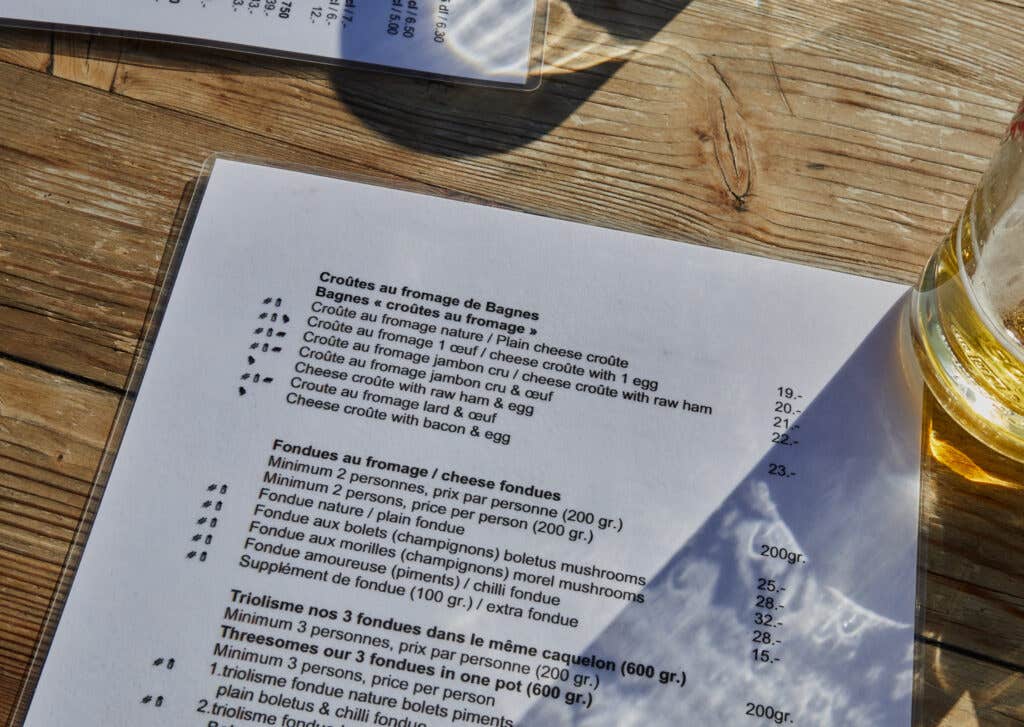
Returning to the reason I’m there, Baillifard makes it clear that the importance of a good croûte lies in the quality of bread (a crusty sourdough) and most importantly, of course, the cheese. “You want to taste the grass and wildflowers, nothing fanciful,” he says. I came looking for developments in Valaisanne cuisine and found people tinkering with the classic—I even got to see the roboclette in action. But truth be told, the novelty I thought I might uncover never materialized—and that's exactly why I'll keep coming back.
Recipe
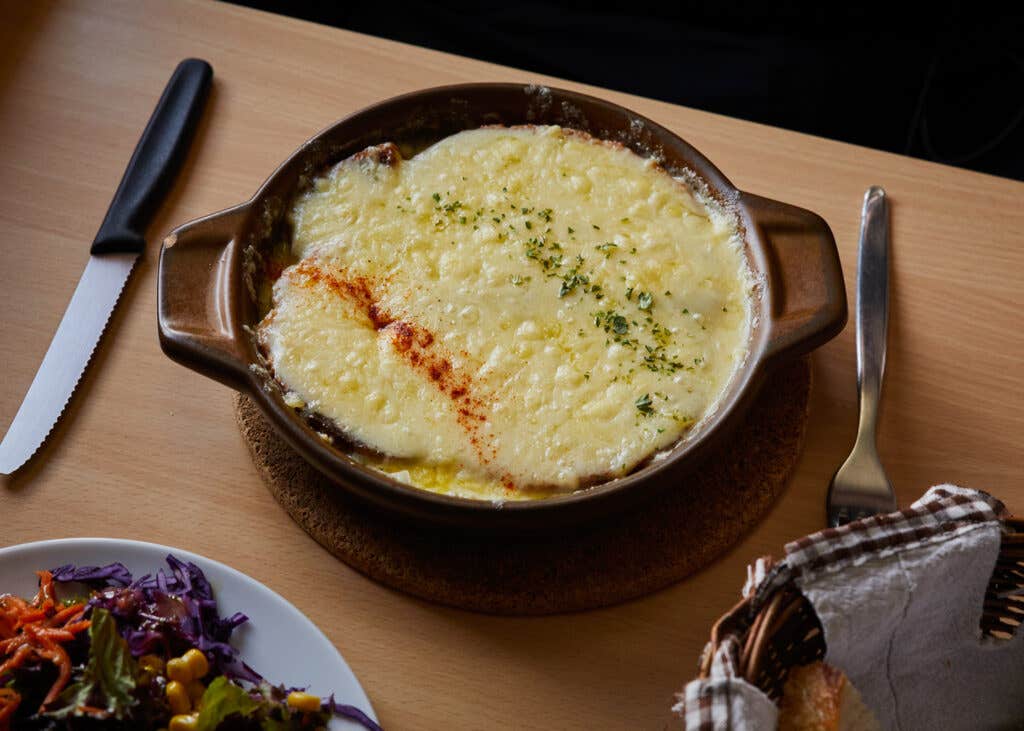
Keep Reading
Continue to Next Story








